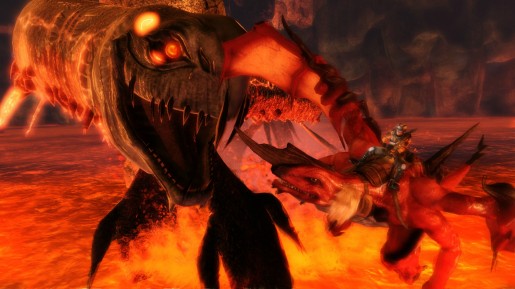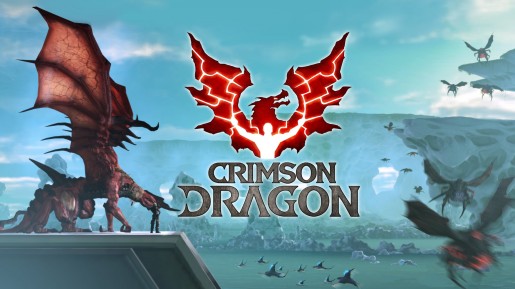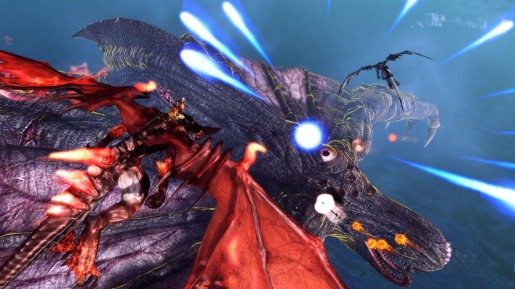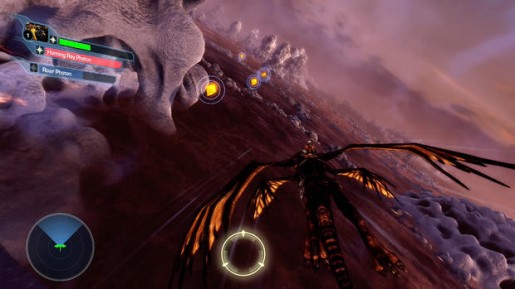Crimson Dragon first appeared back in 2011 at the Tokyo Game Show under the name Project Draco for the Xbox 360. The game was then officially revealed as Crimson Dragon, but delayed ahead of its release in Japan in mid-2012, with no reason given for the delay. It wasn’t until E3 2013 that the game resurfaced for the Xbox One as a launch title. Crimson Dragon is seen by many as a spritual successor to the very well regarded Panzer Dragoon series due to a few reasons.
The game brings back together the director of the first three games in the series, Yukio Futatsugi, along with Saori Kobayashi, the composer for Panzer Dragoon Saga and Panzer Dragoon Orta. Perhaps even a larger reason is how similar the on-rails gameplay is to the original. With the Panzer Dragoon series being so well respected and loved, Grounding Inc. had quite the tall task to take on with Crimson Dragon for the Xbox One.
Crimson Dragon provides a very simplistic gameplay style that is very easy to learn for newcomers. Originally the game was created as a Kinect only experience, but luckily it was retooled to utilize a controller with minimal Kinect usage. When you first fire up the game, you will learn the basics rather quickly. As with on-rails shooters, your forward movement will be automatic while you control your left and right movement throughout. This is achieved by the left and right analog sticks. The left stick controls your actual movement as you weave from side to side. The right stick controls the crosshairs as you move them across the screen to target your enemies. Targeting is however not the most accurate while you play. Due to awkward movements throughout the screen at times, you will often lose track of the crosshairs and just be firing almost blind.
This is where the abundance of different attacks at your disposal comes into play. Each dragon comes with default attacks, but they can be replaced with new attacks as you level up and find more food to feed to your dragons. Some attacks are homing attacks that specifically target and only hit those enemies. Others are rapid fire attacks that are very useful in the mini-boss and boss fights as they can hit more often, though with less accuracy. The homing attacks occur a lot less often, but are the easiest way to hit most enemies in your path. The rapid fire attacks hit a lot more quickly, but there is a major drawback, you will run out and have to let the attack bar replenish. This means you will almost always have to resort back to your other attack.
As you move through the stages, one move will become very important to your survival, the barrel roll. As seen in classic games like Star Fox or the original Panzer Dragoon games, you will learn very quickly how helpful this move is in battle. By hitting the left or right bumper, your dragon will use the barrel roll to better move left and right to avoid obstacles and attacks. While this is quite useful, the recovery time is kind of high, so you have to learn to master it if you plan on using it a lot.

While the gameplay itself is quite fun and satisfying, the game does begin to get repetitive after awhile, especially in long play sessions. It may be a bit hard to really change up too much in an on-rails shooter, but you will keep doing the same exact missions over and over again on most every level. Each level has a number of these missions, such as “Wipe out the enemies” or “Recover the beacons.” Luckily, the last few levels ramp up the action with some multi-part boss fights. There are some boss fights throughout the game, but the last few in the game are much better than the earlier ones that really felt no different from the rest of the stages.




